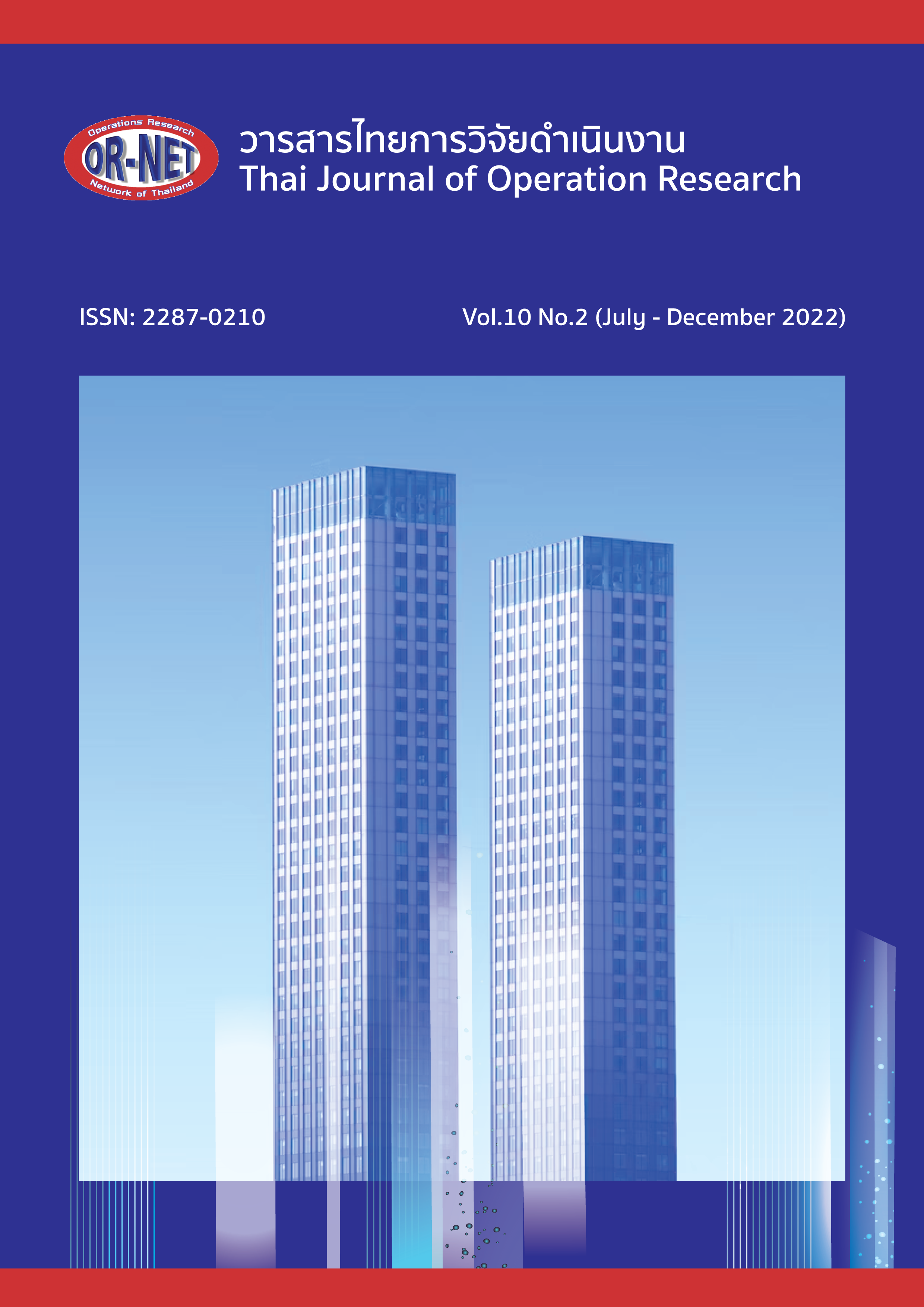Comparison between the dynamic heuristic scheduling rules in the fuel distribution process of the fuel depot
Keywords:
dynamic heuristic scheduling, least operation remaining, most operation remaining, largest total processing time, largest processing timeAbstract
This research demonstrates the comparison of the energy efficiency improvement by the dynamic heuristics scheduling of the truck. Filling-fuel scheduling is considered based on the pump’s usage, which is changing all the time. Since the pump can handle 2-5 nozzles at the same time and the orders consist of more than one fuel type with different fuel volumes. The Dynamic Heuristic Scheduling is proposed by comparing the Least Operation Remaining with Most Operation Remaining rules and the Largest Total Processing Time with the Largest Processing Time to prioritize fuel orders by considering the number of used-fuel nozzles and work remaining in the system, which are changing all the time. With four dynamic heuristic methods, the dynamic heuristic scheduling by Least Operation Remaining combined with the Largest Processing Time yields the least energy usage. The energy for one-liter fuel was reduced by 42%, from 0.42 watts-hour per liter to 0.24 watts-hour per liter. This also affected the pump energy cost reduction of 200,215.25 Baht per month on average. The scheduling technique is based on a stable ordering process in which volumes and orders do not change during the scheduling process and is also limited by the physical characteristics of the depot.
References
S. S. Panwalkar and W. Iskander, “A survey of scheduling rules,” Operations Research., vol. 25, no. 1, pp. 45-61, 1977.
ปารเมศ ชุติมา, เทคนิคการจัดตารางการดำเนินงาน, พิมพ์ครั้งที่ 2., กรุงเทพมหานคร: สำนักพิมพ์แห่งจุฬาลงกรณ์มหาวิทยาลัย, 2555.
C. C. New, “Job shop scheduling: Is application of dispatching rules feasible?,” Journal of the Operational Research Society., vol. 26, no. 1, pp. 35-43, 1975.
ปวีย์ธิดา พัฒน์อภิพงษ์, ปุณณมี สัจจกมล และ ไอลดา ตรีรัตน์ตระกูล, “การจัดตารางการผลิตโดยใช้วิธีฮิวริสติกแบบผสม กรณีศึกษา: โรงงานคอนกรีตผสมเสร็จ,” วารสารวิศวกรรมศาสตร์ มหาวิทยาลัยเชียงใหม่., ปีที่ 25, ฉบับที่ 1, น. 226-233, 2561.
T. C. Papadopoulou, “Application of Lean Scheduling and Production Control in Non-repetitive Manufacturing System using Intelligent Agent Decision Support,” Ph.D Philosophy, Brunel University, London, UK, 2013.
ยอดดวงใจ นาคปฐม, “การจัดตารางการผลิตแบบตามสั่ง สำหรับอุตสาหกรรมสิ่งทอ,” วิศวกรรมศาสตร์มหาบัณฑิต, สาขาวิชาการจัดการงานวิศวกรรม, มหาวิทยาลัยศิลปากร, นครปฐม, 2555.
สุเทพ บุตรดี, ชัยวัฒน์ นุ่มทอง และ ปัญจพร แพใหญ่, “วิธีการจัดตารางการผลิตแบบฮิวริสติกแบบผสมเพื่อประสิทธิภาพการผลิตสูงสุดม” ใน การประชุมวิชาการข่ายงานวิศวกรรมอุตสาหการ ประจำปี พ.ศ. 2550, ภูเก็ต, ประเทศไทย, 2550.
Downloads
Published
How to Cite
Issue
Section
License

This work is licensed under a Creative Commons Attribution-NonCommercial-NoDerivatives 4.0 International License.




